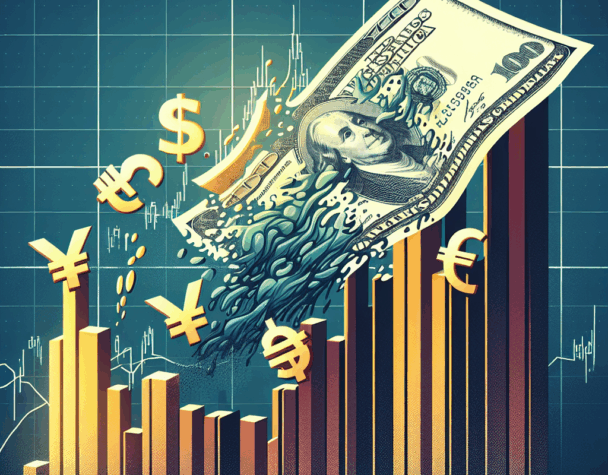
Dollar Weakens Amid Policy Shifts; Asian Currencies Gain
Sun, June 01, 2025U.S. Dollar Faces Decline Amid Policy Shifts
The U.S. dollar has experienced a notable decline, diverging from its traditional correlation with Treasury yields. Historically, rising Treasury yields have attracted foreign capital, strengthening the dollar. However, recent policy decisions, including new tariffs announced in April, have led to a depreciation of the dollar by 4.7%, even as 10-year yields climbed from 4.16% to 4.42%. Analysts attribute this to concerns over fiscal sustainability and the independence of the Federal Reserve, which have undermined investor confidence in the dollar’s role as a global reserve currency. This shift complicates traditional portfolio strategies, as the dollar no longer acts as a reliable hedge. Investors are advised to prepare for continued dollar weakness, especially in favor of the euro, yen, and Swiss franc, and to consider allocating portions of portfolios to gold to mitigate rising risks. (ft.com)
Asian Currencies Strengthen Amid Easing Trade Tensions
In contrast, Asian currencies have seen a surge in bullish bets, driven by easing U.S.-China trade tensions and new regional trade agreements. Investors have increased long positions in various Asian currencies, particularly the Taiwanese dollar and Philippine peso, which reached their highest levels since 2020. The Chinese yuan also hit its peak since October 2024, buoyed by signs of renewed trade talks between the U.S. and China. The Taiwanese dollar gained over 6% in May, while the South Korean won climbed more than 4%. This shift reflects a diversification away from the U.S. dollar due to concerns about U.S. fiscal policy and trade strategies. (reuters.com)
Euro’s Potential as a Dollar Alternative
European Central Bank President Christine Lagarde has stated that the euro has the potential to become a global alternative to the dollar, conditional on strengthening the European Union’s financial and security infrastructure. Despite global investors reducing dollar exposure due to inconsistent U.S. policies, they have turned to gold rather than the euro, which remains stagnant at about 20% of international reserves compared to the dollar’s 58%. Lagarde emphasized that the euro must earn global influence by building deeper capital markets, reinforcing legal and trade frameworks, and enhancing military capabilities to offer geopolitical reliability. (reuters.com)
Market Reactions to Tariff Developments
U.S. stock futures and the dollar surged after a federal court blocked President Trump’s proposed “Liberation Day” tariffs. The administration has appealed the ruling, signaling a likely legal battle that may reach the Supreme Court. Investors responded with enthusiasm, pushing equities higher and increasing demand for the dollar, while cautious optimism prevailed among analysts. Many noted this temporary relief could ease inflation worries and lift risk sentiment but warned of ongoing uncertainty. (reuters.com)
Implications for Investors
The recent developments in currency markets highlight the importance of staying informed and adaptable. Investors should monitor policy changes and geopolitical events closely, as these factors significantly influence currency valuations. Diversifying portfolios to include a mix of currencies and assets can help mitigate risks associated with currency fluctuations. Additionally, considering safe-haven assets like gold may provide a hedge against potential volatility in the currency markets.
For more detailed analysis and updates on currency markets, refer to reputable financial news sources and consult with financial advisors to tailor investment strategies to current market conditions.

